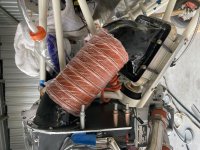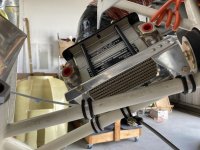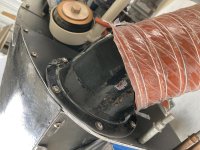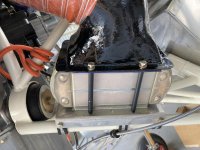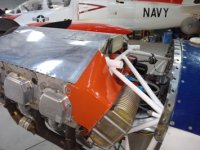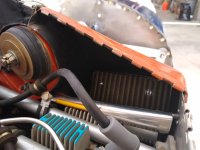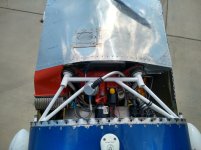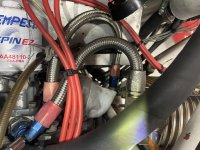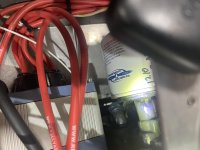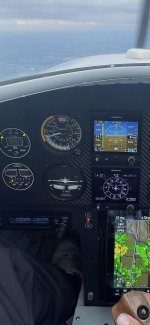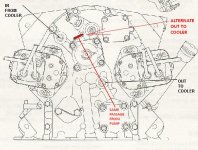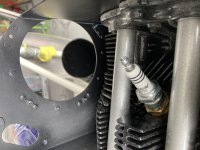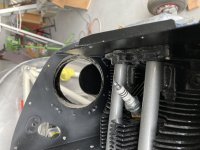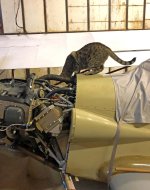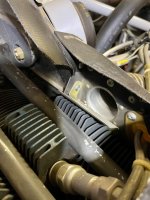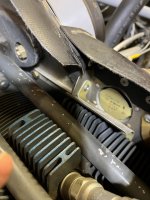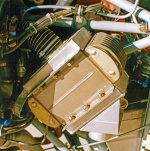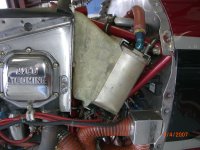This was a drift/response to the thread “yet another oil cooler thread”. My apologies if this has already been presented/discussed/debated. Trying to avoid the known baffle crack contributors. Also, my cowl is much tighter than Vans so it would push the cooler behind #4 to some degree. So, remote mount was my best option approach. Settled on an engine mount, mount. Not saying it’s best or will work for everyone but it solved some problems for me without having to rivet on the FW. The burden (for me) was shifted to composite fab. Still not good at it but getting better. Oil cooler louver, should it be needed, will be an easy add.
@Wirejock Larry, a follow up to you. Form and fit are verified. Function verification is still a ways off. Two of four pix got rotated but you get the idea.
@Wirejock Larry, a follow up to you. Form and fit are verified. Function verification is still a ways off. Two of four pix got rotated but you get the idea.
Attachments
Last edited:



